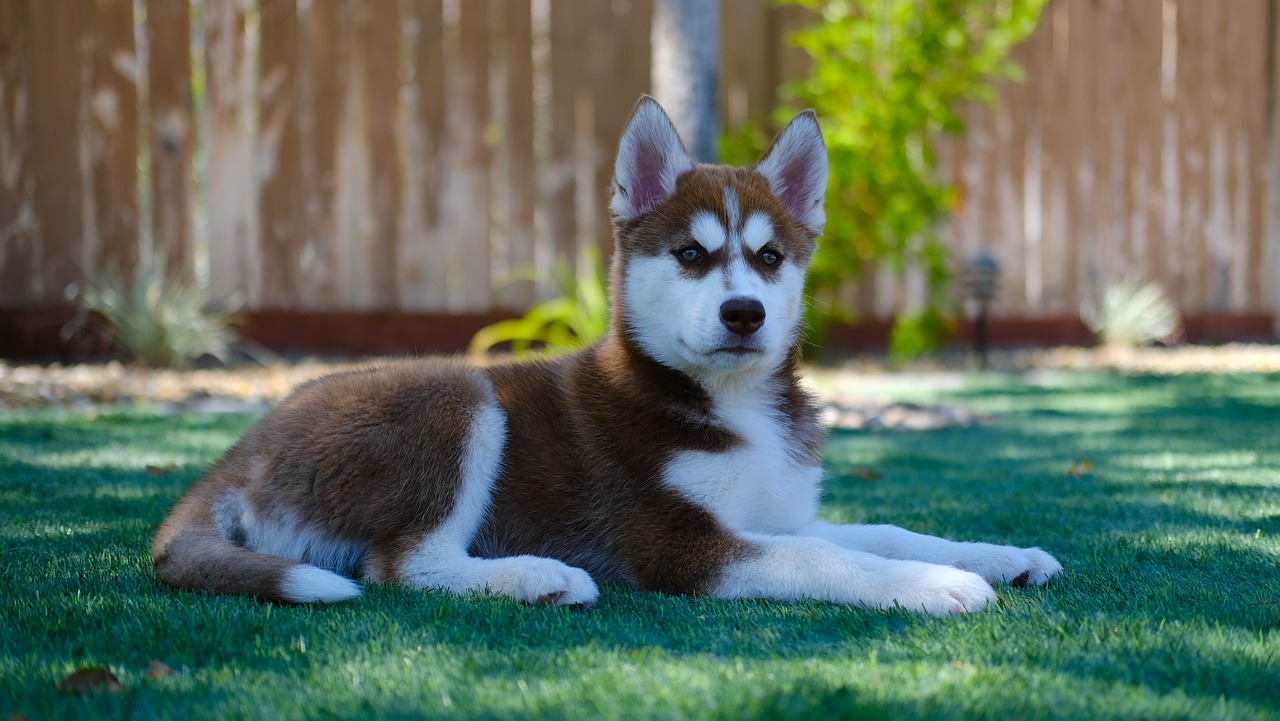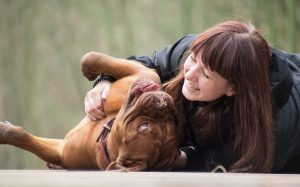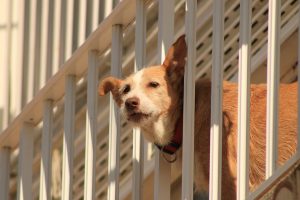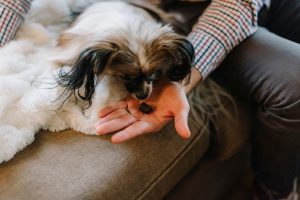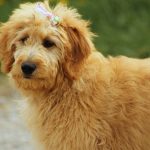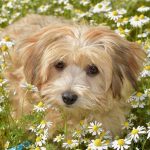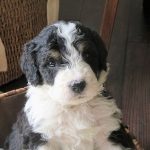Graceful! Free-spirited! Athletic! Playful! If you are looking for such a dog breed that has these traits, your best match is a Siberian Husky.
Siberian Husky is a graceful medium-sized dog that is best known for its powerful but effortless gait. The Siberian Huskies are naturally clean and they have a little doggy odor.
If you are planning to get a Siberian Husky puppy and looking for a detailed guide about the breed, we have collected the most trustworthy facts about this breed.
Note: Siberian Huskies are among the top breeds that end up in shelters because they are difficult to handle for novice owners. So, two things. First, don’t get a Husky if you think you won’t be able to handle it the way it should be handled. Secondly, if you want to get a Siberian Husky, adopt one from a shelter and not from a breeder.
Read: Benefits of Rescuing a Dog
Before exploring the breed in detail, let’s have a quick look over its profile.
Table of Contents
Siberian Husky Dog Breed Profile
| Breed Name | Siberian Husky |
| Other Names | Chukcha |
| Origin | Siberia |
| Dog Breed Type | Pure Breed |
| Dog Breed Group | Working group |
| Height | 20 to 23.5 inches |
| Weight | 35 to 60 Pounds |
| Life Expectancy | 12 to 14 Years |
| Coat Type | Thick Double Coat |
| Colors | - Agouti & White - Black - Black & White - Black Tan & White - Brown & White - Gray & White - Red & White - Sable & White - White |
| Grooming Needs | Medium Grooming needs |
| Hypoallergenic | No |
| Temperament | intelligent, independent, and stubborn |
| Apartment Living | Not ideal for Apartments |
| Kid-Friendly | Yes |
| Pet-Friendly | Yes but not ideal for small pets due to their predatory nature |
| Health concerns | Cataracts - Progressive Retinal - Atrophy - Corneal Dystrophy - Uveodermatologic Syndrome - Follicular Dysplasia - Zinc Deficiency - Hypothyroidism |
| Overall Health | Good |
| Intelligence level | High |
| Trainability | Not easy to train |
| Energy Level | Very high |
| Activity | Up to Two Hours every day |
| Litter Size | 4 to 8 Puppies |
History and Introduction to Siberian Husky
The appearance of Siberian Husky immediately suggests northern heritage. Its parent breeds (most probably the Laika and a Spitz breed) were initially bred in northeastern Asia by Chukchi people. As the Siberian Huskies are the best loyal and mischievous dogs, these dogs were kept by Chukchi people as companion dogs. They are also known as endurance sled dogs.
The purity of sled dogs is maintained by Chukchi people for many generations. The reason is that the Chukchi people are isolated from the world. Siberian Husky became famous after winning sled races in the 1900s.
The appearance of Siberian Husky
To describe the beauty of Siberian Huskies, “striking” is the best word. They have bright, piercing, almond-shaped eyes with the colors amber, blue and brown. Some Siberian Huskies have odd eyes, one blue, and one brown or parti-eyed which is described as half brown and half blue eyes. Their faces, also called masks are white with long snouts and serious expressions.
As they lived in a cold environment, they have a thick double layer coat which provides excellent protection against extreme cold weather. The color of their coat is usually red, grey, black, or snow white. They have triangular erect ears.
While standing, they are 23 inches high at wither. Their weight is between 35-60 pounds. They are sleek from their nose tip to the end of their tail. The tail is bushy in appearance.
Due to their immense beauty, the breeders have mixed it with some other breeds to produce newer breeds. The most popular of them are Pomsky and Huskimo.
Siberian Husky pros and cons
What are the pros of owning a Siberian Husky?
Beautiful and attractive
All dogs are beautiful but the Siberian Husky is special. Blue eyes, wolf-like body, clean and elegant coat, and graceful attitude make a Husky different dog from other breeds. But beauty shouldn’t be the only criteria to choose this dog as it comes with lots and lots of responsibilities.
Low-maintenance dog
They can overcome extreme weather conditions and have the ability to survive on minimal food occasionally. Unlike other shedding breeds that shed all around the year, this dog sheds once or twice a year which saves you lots of time in cleaning.
Healthy breed
Apart from some common health issues that any dog may develop, Huskies are overall healthy dogs. Still, it is recommended to take them for regular vet checkups to avoid any health issues.
Talkative companion
Other dogs bark but Huskies howl. They are like a talkative companion who would not let you get bored. Especially, they are responsive to songs and sirens and try to imitate them which is great fun.
Playful and active
They need a lot of activities to stay healthy so they are an ideal breed for anyone who loves to jog, run, and explore. Not only this but you can also take them for hiking, biking, and camping and they won’t disappoint you.
Clean breed
They are not stinky like other dogs because they are very clean naturally. Having a Siberian Husky home means no doggy odors and no dirt.
Cons of having a Siberian Husky
Escape artist
A Siberian Husky is a clear example of beauty with brains because it invents the newest methods to escape from your premises. It can easily squeeze through small holes and can jump over fences. So, it is recommended to install at least 5-feet fences in your yards and keep them supervises when they are outdoors.
Excessive energy
They are very energetic and needed to be handled accordingly. You should not get a Husky if you won’t be able to manage time to exercise your fur baby. Plus, their overloaded intelligence requires mental stimulation activities so you need some extra time for your dog.
Stubborn and independent
Siberian Husky is an independent dog that may often show stubbornness. Interestingly, they sometimes ignore your commands and keep staring at you as if they didn’t hear you. Early-age socialization and training should be a part of their daily routine to avoid such issues.
Heavy shedding twice a year
During their blowing season, they shed that much that you need to clean all the hair using special vacuum cleaners. In fact, their hair can be used for many purposes such as spin their yarn to make cloth.
Related: How to Maintain and Clean-up After High Shed Dog Breeds
Intelligence and temperament
Siberian Husky is a playful dog having an eager attitude. It has a curious mind and is ready to move to find something new. It is friendly and one of the best hosts for anyone that comes to your premises.
By nature, they are not considered guard dogs but working dogs. Although they do not bark much, they are talkative and like to howl almost every time they need to say something or have some concerns.
Plus, they want your attention and interestingly, they are a bit proud that is why they think they deserve more. Don’t leave them alone for a long time or they may become destructive and develop separation anxiety. It’s important to socialize and train them from an early age in order to avoid behavioral issues in their adulthood.
Living requirements
As long as Siberian Huskies are active and busy, they can survive in any environment. They have a natural tendency to move hundreds of miles to explore this.
While making his home, keep following things in your mind. The fence should be tall, at least 5 feet high. There should be a large yard and bury the bottom of the fence at least one foot deep.
If there is a simple gap in the fence, the Husky will go to find out a new horizon (One of the reasons they end up in shelters). They are well known as talented artists because they find out the weak point of the fence and escape. They consider it as a challenge and try their best to get success.
Moreover, they have an inherited trait of “digging”. As an ancestral behavior, they excavate a lot, digging in the snow to hide food. As the best training activity, you should build a sandpit in a corner of your yard. Hide their toys in it, and your fur baby will find it great fun to find out the toys. Siberian Huskies are best as a companion pet if you also like to roam.
Training
They should be trained to live in a family. Their training is a difficult task because they are stubborn, intelligent, and active dogs. Importantly, to train Siberian Huskies, personal protection is necessary. They learn very fast so training should not take a long period but consistency and patience is the key for you as a trainer.
An 8 week old Husky is best to train and you can train them for a call. You should start their training with basic commands such as sit, stop, go, and others.
Grooming and maintenance
The best characteristic of Siberian Husky is his self-cleaning function. As it is not smelly, so there is no need to bathe him on a regular basis. You can bathe them a few times a year.
They have a sleek hair coat, so there is no need to brush them on a regular basis. They usually shed twice a year when their undercoat is blown due to seasonal changes. So, unlike other shedding breeds, you have to take care of their shedding twice a year and not for the whole year.
During the shedding season, make sure to brush the hair coat when the hair is shedding. This process is also known as blowing-coat. To remove the old undercoat, the tools used are a metal comb and pin brush.
Also, brush their teeth on a regular basis to keep their breath fresh and oral health up to the mark. Their nails are needed to be trimmed twice a month while keeping an eye on their ears is recommended to eliminate the possibility of dust and foreign objects.
Related: Things not to do while Grooming your Dog
Food and diet
Siberian Huskies require less feed as compared to other similar-sized dogs. You should give them two cups of dry meal two times a day. The feed requirement depends on the age, size, and activity level of your dog. So, it is recommended to monitor the weight of your pup to avoid obesity.
Exercise and activities
The exercise requirements of these dogs are very high because they love to play and find out new things. As they are working dogs by their gene, so without work, nothing is exciting for them. They should be exercised for up to 60 minutes daily. This will help them not to bore.
In a cold environment, Siberian Huskies are the best jogging partners. While in warm weather, do not exercise them too much. As another brilliant character, they also require a little yard to enjoy and waste all the energy. You should never let your Siberian Husky alone for a long time in the home.
Health conditions and problems
During their long life span, Siberian Huskies normally stay healthy. With the help of a nutritious diet, the metabolism and exercise of Siberian Huskies keep them healthy. And they do not get too much illness. The most common health problems faced by your Siberian Husky are hip dysplasia and eye problems.
Hip dysplasia
It is a genetic condition that occurs over time. In this condition, the thigh bone, also called the humerus bone, does not fit properly in the ball and socket joint. The cartilage present between the bones wears out and causes severe pain which may result in painful arthritis.
In case of mild pain, veterinarians recommend medication. In case of serious problems, surgery has to be done. As a prevention, the Siberian Huskies should be tested for Hip Dysplasia before breeding, and if found any issue, they should not be bred.
Eye problems
Several eye problems occur in Siberian Huskies that are capable of causing blindness in them. The most common conditions are corneal dystrophy, juvenile cataracts, and progressive retinal atrophy.
Price and maintenance cost
You can get a Siberian Husky between $500 to $2000 if you are looking to get it from a reputable breeder. The price usually depends on different factors including bloodline, puppy’s gender, breeder’s reputation, color, and several others.
Also keep a good budget for dog supplies, food, grooming, and vet visits.
Final words:
So, it was Siberian Husky, one of the most beautiful dogs with lots of attitudes. If you are a first-time owner planning to get a dog, believe us, Siberian Husky is not for you. It is a breed for those with vast experience in handling stubborn and independent dogs.
Recommended read:
Small Dog Syndrome: What is it? How do you avoid it?
7 Must-Know Dog Care Tips for UK Dog Owners
All About Newfypoo Dog Breed – The Gentle Giant

